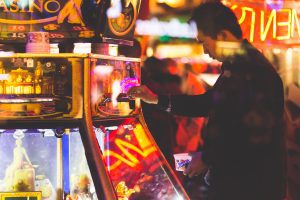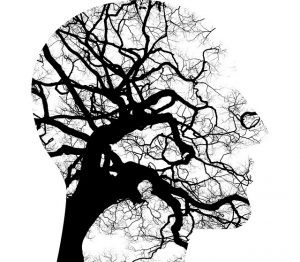Thanks to the advances in neuroscience, we were able to know more about the brain over the past twenty years than ever in history. Yet, in our everyday race, we may overlook the effects that social media has on our behavior. Because we are our brains.
A brilliant comparison
You simply take it for granted because it’s always there. First thing in the morning as soon as you wake up. The last thing at night before you finally go to bed. And I’m not talking about coffee here. Neither about your brain.
Yesterday I watched a short video explaining a fantastic metaphor of how the feed of any social platform works. The best comparison I’ve ever heard about social media was there, ironically (or not) on my social network feed. And the words kept spinning in my head. A feed works exactly like a slot machine in the casino. What?
How does it work?
If you think it may sound crazy to establish a relationship between Facebook and gambling, you should think twice. Both provide us with insanely fast results and, most importantly, there’s an exciting randomness element to the activity. It’s impossible to figure what you’re going to get next, and that anticipation factor is crucial to keep us motivated to play more and more. Because it always gets you asking yourself: What will I get this time? All sevens? Cherry? A photo of my grandma? 20 likes? No likes at all?
The dark side of this matter is that slot machines happen to be one of the main sources of addiction of all times. So, what can we think about social networks? What’s the conclusion? Well, they’re certainly a stunning kind of slot machine and the internet is a gigantic casino that never closes its doors.

Going online
On the other hand, not everything is a tragedy when it comes to internet use. The benefits of technology and social networks, in particular, are undoubtedly huge. They’re impacting health and businesses in a way that we can’t still fathom, for the better or for the worse.
One day, thanks to social media, it was possible to build an online empire from scratch without the expensive costs, like rent, that a physical store requires. At this point, nobody can’t deny that geographical barriers have been overcome by the worldwide use of social media and that working possibilities have expanded more than ever. It’s increasingly common today that entrepreneurs and freelancers rely more and more on social profiles to build up a business at sometimes zero-cost. And why could this be possibly wrong?
But sometimes we might wonder… what’s keeping us scrolling our feed, sometimes unpurposefully, even though it makes us feel tired? From a neuroscientific point of view, it’s all because of dopamine.
What’s dopamine?
Dopamine is a neurochemical involved in addiction circuits, among other complex brain mechanisms like motivation and curiosity. What´s the connection between dopamine and social media? It’s simpler than it seems.
As dopamine is related to action-driven behavior to achieve goals, it provokes us the urge to seek the things that make us happy. But not just look for them once; the human brain searches repeatedly for the things that give us pleasure. After all, it’s what human nature is about—avoiding pain and gaining pleasure. (In doubt, ask Freud!)
This is exactly the case when we instinctively smile at getting new likes on social networks and re-check them more times than necessary to see “what’s going on”. Truth is, the human being has an inherent need for social approval and connection, and here’s when the feed of social networks enters the picture.
When we share something on social media, we crave for likes because that gives us a lot of pleasure. And the more likes we get, the more likes we need to feel the same amount of pleasure. Something similar happens with followers. And drugs abuse. And gambling. So, that pretty much explains unwanted hours of scrolling feeds that sometimes can get out of hand. This cycle is called a reward circuit.

Always look on the bright side of dopamine
However, dopamine is not a negative thing at all—don’t get me wrong. It’s thanks to this wonderful neurotransmitter that we can set goals that we desire and be strong enough to achieve them taking the necessary steps to get there, knowing at the same time that we’re not going to get immediately the outcome we want. The reward circuit that social networks trigger is the same that allows us to think long-term and design effective strategies, plan ahead, and anticipate to anything that we perceive as harmful to simply avoid it if we’re healthy enough.
The adverse consequence that almost nobody talks about is that this slot machine thing about social media causes a lot of anxiety—really! A lot. And this is where the human brain has the capacity to limit the exposure to social media, bypassing the most instinctive regions that are releasing so much unnecessary dopamine. Because you know what?
What lies beyond social media dependence is the need to feel safe. The demand for real human connection, not virtual. If you want to expand upon this, check out oxytocin.
Fortunately, the human being is the only creature capable of thinking about their own thoughts (that’s what we know as metacognition) and that’s an amazing tool that can lead people to a lot of internal growth and changes in behavior.

Anatomical changes
Maybe you’ve heard about the frontal lobe. It’s the part of the brain that truly makes us humans and differentiates us from other less complex creatures. The frontal lobe is suffering reduction because of technology overuse, especially in younger generations. We’re needing more working memory (info at hand) and we’re losing long-term memory in the process. Also, the reduction of the frontal lobe causes difficulties in regulating aggression and other negative impulses. Everything indicates that we seriously need to strike a balance to avoid the negative effects of technology and maximise their potential for leading better lives.
